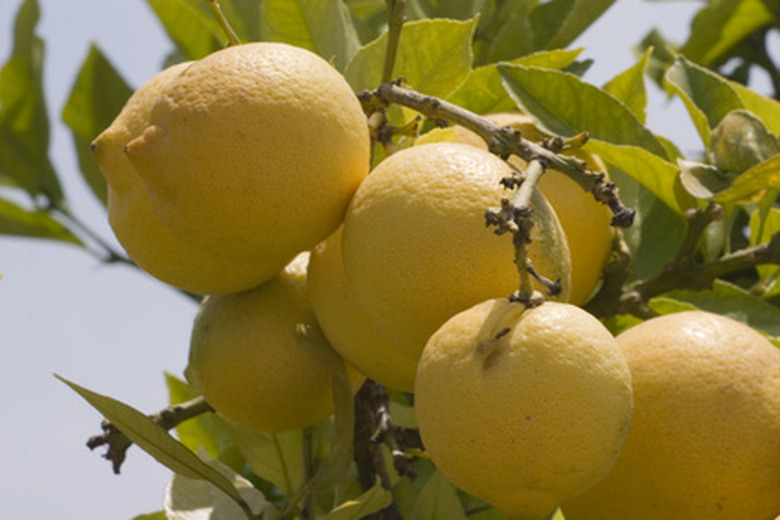Mold On Lemon Trees
Mold that appears on lemon trees is unsightly and can lead to a significant loss of fruit that you would otherwise enjoy from your home garden. Fungal in nature, some molds are caused by the entrance of spores on their own while other infections are a secondary problem related to an insect infestation.
Care
Vigorous trees are more resilient when it comes to avoiding and fighting off infections associated with fungi and mold in comparison with injured, stressed lemon trees. Plant lemon trees in locations that offer full sunlight for vivid, healthy fruit production, according to the AgriLife Extension Texas A&M System. Citrus trees thrive in moist, well-drained soil. Excessively wet sites with waterlogged soil cause rapid decline of lemon trees, which are unable to absorb the necessary amounts of water and nutrients.
Types
Lemon trees are most often affected by blue and green molds as well as sooty mold. Blue mold is caused by the fungus Penicillium italicum, and green mold is caused by the fungus Penicillium digitatum, according to the Texas Agricultural Extension Service. Sooty mold is a fungal infection that feeds on honeydew, a sugary substance, created by the feeding of sucking insects that suck sap from plant tissue. Aphids, soft scales and white flies are among a long list of culprits, according to the Ohio State University Extension.
- Mold that appears on lemon trees is unsightly and can lead to a significant loss of fruit that you would otherwise enjoy from your home garden.
- Excessively wet sites with waterlogged soil cause rapid decline of lemon trees, which are unable to absorb the necessary amounts of water and nutrients.
Effects
On lemon trees, green mold causes a disease that occurs after lemons are harvested from the tree. After invading through wounds in the lemon fruit, a white mold that turns green on the surface of the fruit appears, leading to fruit rot. Blue mold is similar, but the mold on the fruit rind becomes blue. The ideal growth temperature for these fungi is 75 degrees Fahrenheit, according to the Texas Agricultural Extension Service. Sooty mold results in a blackish, flaky mold that, as the name suggests, resembles soot. The mold appears on foliage, branches and fruit. Generally, sooty mold only poses a cosmetic threat except for extremely severe cases during which the tree is saturated and cannot absorb adequate sunlight, according to the Ohio State University Extension.
- On lemon trees, green mold causes a disease that occurs after lemons are harvested from the tree.
- Blue mold is similar, but the mold on the fruit rind becomes blue.
Natural Control
For natural control of mold on lemon trees, prevent the occurrence of injury through careful handling and transport as blue and green mold fungi invade through wounds. For sooty mold on lemons, examine your trees for the presence of insects and any signs of decline. Identify any insect infestations and address them accordingly to rid your tree of its sooty mold problem. Use a strong stream of water to remove mold from plant surfaces, according to the Ohio State University Extension.
Chemical Control
For sooty mold problems on lemon trees, once you have determined the insect infestation problem, determine an appropriate insecticidal control for application. When in doubt, contact a local county extension agent for advice or a licensed professional for appropriate chemical management. For chemical control of blue and green mold on lemon trees, blue mold is not treatable with fungicides but should be given calcium treatments post-harvest to help deter infection, according to the Penn State University Department of Plant Pathology. Control green mold chemically with a fungicide containing the active ingredient imazalil, according to the University of Florida Extension.
- For natural control of mold on lemon trees, prevent the occurrence of injury through careful handling and transport as blue and green mold fungi invade through wounds.
- For chemical control of blue and green mold on lemon trees, blue mold is not treatable with fungicides but should be given calcium treatments post-harvest to help deter infection, according to the Penn State University Department of Plant Pathology.
